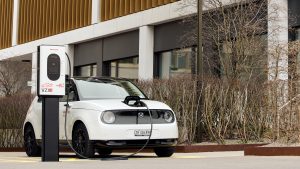Urban ropeways are booming. With good reason: a recent study by PwC underscores the many advantages of this mode of transport in urban traffic.
Traffic jams, exhaust fumes and noise are part of everyday life in larger cities. Individual traffic is slow and public transport is reaching the limits of its capacity in many places.
New mobility concepts are therefore in demand. Cable cars are one of the most promising alternatives. A study by the consulting firm PwC attests to the high potential of this mode of transport. The authors of the study identify numerous advantages over other modes of transport.
For one thing, aerial tramways have a high maximum cycle density: cable cars transport around 6000 passengers per hour, which is roughly equivalent to the capacity of a metro. Streetcars, on the other hand, can only move about 2000 to 3000 people per hour, and buses only 600 to 1000. Secondly, the probability of accidents is very low, which makes ropeways a very safe means of transport that is also always on time. In addition, ropeways have an unbeatable eco-balance and cause hardly any emissions.
The biggest advantage of urban ropeways from an urban planning point of view is the low construction effort. Tunnels and bridges are not required, nor are signaling and traffic control systems. As a result, the construction period is relatively short at only 12 to 18 months. By comparison, subway construction projects usually take five to ten years. This means that investment costs are comparatively low. And ultimately, the operating costs are also lower: both personnel costs and energy costs are lower than for all other forms of public transport.





